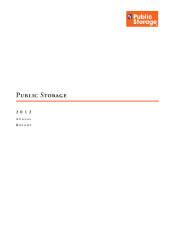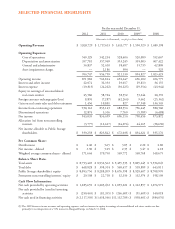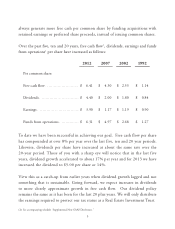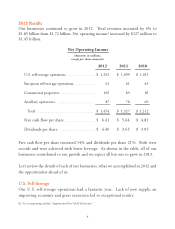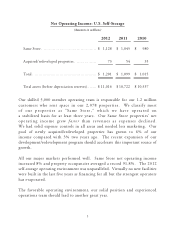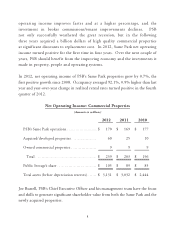Public Storage 2012 Annual Report Download - page 4
Download and view the complete annual report
Please find page 4 of the 2012 Public Storage annual report below. You can navigate through the pages in the report by either clicking on the pages listed below, or by using the keyword search tool below to find specific information within the annual report.
2
TO OUR SHAREHOLDERS
I am pleased to report another year of solid operating results, improved financial
strength and portfolio growth. In addition, we continue to develop our management
teams and invest in our properties. Our intrinsic or business value per share
improved commensurately with our growth.
Before reviewing our 2012 results, let me review what I think should be your focus
when evaluating your investment in Public Storage.
Your investment in Public Storage
Our goal is to grow free cash flow per share on a consistent, sustainable basis.
Free cash flow is the funds remaining after paying expenses, maintenance
capital expenditures and, for our commercial properties, tenant improvements
and broker commissions, as well as preferred shareholder dividends. It represents
the cash available to pay common dividends, invest in additional income
generating properties or retain for future use. I frequently refer to this as
“grocery money” as it is real cash like you spend at the grocery store. Since we
now pay out a significant portion of our earnings in dividends, we manage for the
occasional “great recession” or serious capital market dislocation.
Why do we use free cash flow on a per share basis? What owners should care
about is how much each share they own is increasing in value, not the size of the
domain being managed. Frequently, in corporate America, management teams
focus on total revenues, total assets or market value, especially relative to public
competitors. While these are interesting metrics, they rarely have anything to
do with value per share.
We only issue common shares if the free cash flow and growth potential of what
we are acquiring are at least equal to, and preferably greater than, the free cash
flow and growth of the shares we are issuing. Rarely is that the case. In addi-
tion, given our ability to issue preferred shares at record low rates, we will almost

